Speakers
Amcel Symposium 2024
The invited speakers are leading representatives of their area of expertise and will definitely inspire our attendees.
-
Prof. Siegfried Waldvogel - Max Planck Institute for Chemical Energy
Electrifying Organic Synthesis
The direct use of electrochemistry for the generation of reactive intermediates can have major advantages towards conventional synthetic strategies. Compared to the action other sustainable approaches such as photochemistry, the overall energetic balance is superior and allows easily scalable conversions. Less or no reagent waste is generated and new reaction pathways are accessible. The contribution will provide an introduction into this sustainable technique. In order to exploit the electricity driven conversions for synthetic purposes and to install unique selectivity two modern approaches will be outlined:
For reaching larger scale in electrochemical conversions, the formation of high-performance oxidizers is an option. By the given versatility a broad applicability is targeted.
Several unique molecular entities require for their installation large amounts of reagents, when using electrochemical tools this can be achieved almost waste-free. This is of particular interest when complex molecules are desired.
The working horse to identify suitable electrolytic conditions is the electrosynthetic screening approach. This strategy gives also rise to fast optimization and subsequent scale-up. For technical realization of electrosyntheses carbon electrodes play a crucial role ranging from diamond to highly isostatic graphite carbon allotropes.
References:
- Angew. Chem. Int. Ed. 2023, e202219217;
- Eur. J. Org. Chem. 2023, e202300220;
- Angew. Chem. Int. Ed. 2023, 62, e202214820;
- JACS Au 2023, 3, 575;
- Angew. Chem. Int. Ed. 2023, 62, e202213630;
- Science 2021, 371, 507
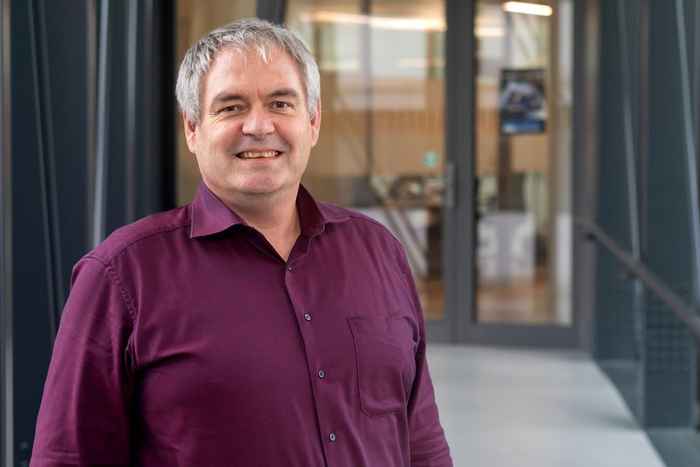
Siegfried R. Waldvogel studied chemistry in Konstanz and received his Ph.D. in 1996 from University of Bochum/Max-Planck-Institute for Coal Research (Prof. M. T. Reetz). After postdoctoral research in La Jolla, CA (Prof. J. Rebek, Jr.), he started his own research at the Universities of Münster and Bonn. He became full professor at JGU Mainz in 2010. In 2023 he became a director at the Max-Planck-institute for Chemical Energy Conversion in Mülheim, wher he is heading the department of electrosynthesis. He is currently directing the future cluster ETOS – Electrifying Technical Organic Synhesis
His research interests are novel electro-organic transformations, scale-up and screening technologies including bio-based feedstocks. In 2018, he cofounded ESy-Labs GmbH, which provides custom electrosynthesis and contract R&D.
-
Dr Eda Yilmaz - Circular Electronics, TNO
Electrification of Recycling Processes for Sustainable Metal Recovery
The amount of end-of-life batteries and consumer electronics is growing exponentially each year and recycling of these products is an essential last resort for circular economy. While recycling carries great benefits such as mitigating environmental risks, creating economic value and recovering critical and strategic materials to support material independency, on process level recycling practices are highly linear. In order to achieve total circularity through recycling, new processes focusing on reagent regeneration, lower energy consumption and lower environmental impact are highly desirable. In TNO, our research team develops sustainable recycling technologies for lithium-ion batteries and electronic waste by electrification. Electrochemistry provides us a vast toolbox to design leaching processes that can regenerate lixiviants in-situ, separate metals from mixtures without using chemically intensive processes such as solvent extraction or recover metals from the solution without harsh pH swings. In my talk I’ll give a glimpse of our efforts in this research direction and discuss why electrochemistry is a great tool to realize circular hydrometallurgy for recycling.

Dr Eda Yilmaz graduated from Bilkent University Chemistry Department in 2006 and she received her PhD in Chemistry with her thesis on "Preparation and characterization of polymer composites containing gold nanoparticles" in 2011. Afterwards she worked as a postdoctoral researcher in RIKEN, Japan for 2 years on development of Li-oxygen batteries. In 2014 she started her own research group in National Nanotechnology Research Center (UNAM) in Turkey as a principle investigator. Her research focused on development of nanostructured battery materials for Li-ion and Li-oxygen batteries to enhance the stability and energy storage capacity of these battery systems, while trying to understand the fundamental electrochemical processes during battery operation. After relocating to Netherlands in 2018, Dr. Yilmaz conducted research on biophotovoltaic solar cells at physics department in Vrije Universiteit and she is currently a scientist in TNO, Circular Electronics team. She and her team aim to make recycling of electronic waste such as Li-ion batteries and waste PCBs sustainable through electrification.
-
Dr Ward van der Stam - Inorganic Chemistry and Catalysis, University of Utrecht
Probing the dynamics of CO2 electrolysis
The electrocatalytic reduction of CO2 (eCO2RR) into valuable base chemicals and fuels is a very complex reaction that depends on the intimate relation between catalyst structure and external reaction conditions. Despite considerable progress over the past few years, it is evident that the precise identification of the active sites of the electrocatalyst under operation remains a challenge, which hinders the rational design and industrial application of advanced electrocatalysts for eCO2RR. For this purpose, in situ characterization techniques are required that probe the dynamic catalyst structure, from bulk to surface, with improved time and space resolution.
In this presentation, I will discuss how we deploy in situ time-resolved Raman spectroscopy (TR-SERS), in situ fluorescence and advanced in situ synchrotron-based X-ray scattering and spectroscopy techniques to investigate the electrocatalytic activation of CO2 and the dynamic chemical structure of the electrode surface at the electrode-electrolyte interface.
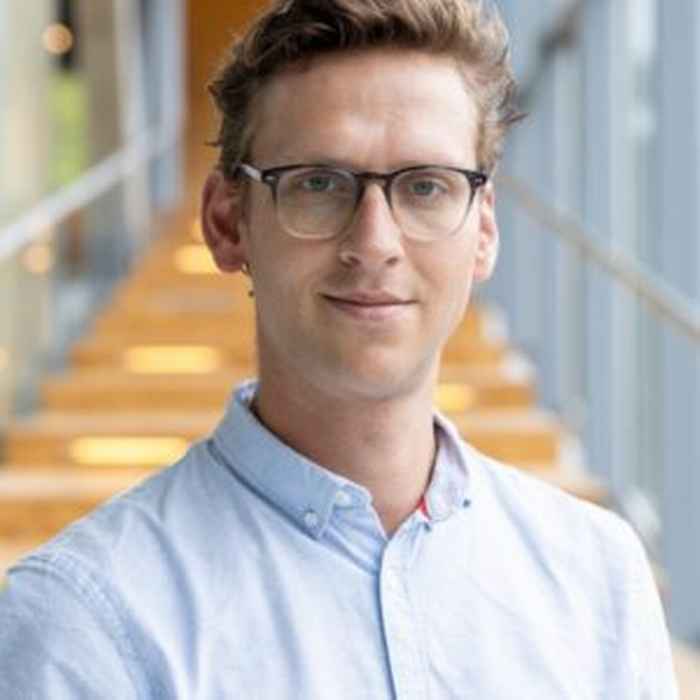
Dr Ward van der Stam is an assistant professor at Utrecht University, where his main focus lies on in situ characterization of electrocatalysts under reaction conditions. The research line combines (colloidal) nanoparticle synthesis strategies, electrochemistry and in situ spectroscopy (e.g. Raman and fluorescence spectroscopy) and X-ray techniques (e.g. X-ray diffraction, scattering and absorption) to access and understand novel reaction pathways in the electrocatalytic conversion of CO2 into value-added chemicals and fuels. Furthermore, he likes to share his passion for sustainability research and what chemistry can do to mitigate CO2 emissions with the next generation of scientists through knowledge dissemination events and teaching.
-
Dr Anja Bieberle-Hütter - Differ
Combining experiments and modeling to identify the limitations at electrochemical interfaces
The limiting processes taking place at the electrodes in photo-electrochemical water splitting are not well understood yet, though this is necessary not only from fundamental point of view, but also to improve the electrodes for possible commercialization. In this presentation, I will explain our combined experimental and computational approach towards identifying limiting processes at electrodes for water splitting[1,2]. From the experimental side, I will focus on recent studies on Fe2O3[3], WO3[4-7], and BiFeO3[8] as oxygen and hydrogen evolution electrodes and will discuss specific limitations in these electrode materials. I will touch upon our latest operando Attenuated Total Reflectance-Fourier Transform Infrared spectroscopy measurements and its challenges[9] towards the identification of the electrochemistry in water splitting.
After this experimental insight, I will explain our multiscale modeling approach to simulate the same data that we are measuring in experiments[10,11]. The heart of the approach is a microkinetic modeling code that is based on a state-space representation with the electrified interface included[10,11]. I will present the approach including its latest extensions which allow for simulating the dynamics of the hole and electron densities over space and time from the electrolyte into the bulk of the electrode[12]. Further, I will discuss the benefits of sensitivity analysis in this system[13] and of combining experiments with modeling to identify the limitations at electrochemical interfaces.
In the end, I will give a glance on the new Pulsed Laser Deposition infrastructure for energy research (PLD4Energy) that we are currently building at DIFFER and will explain how this infrastructure will help to further investigate the limitations at electrochemical interfaces.
- Q. Zhang and A. Bieberle-Hütter, ChemSusChem 9 (2016) 1223 – 1242.
- B. Samanta, Á. Morales-García, F. Illas, N. Goga, J.A. Anta, S. Calero, A. Bieberle-Hütter, F. Libisch, A. B. Muñoz-García, M. Pavone, M.C. Toroker, Chem. Soc. Rev., 2022, 51, 3794.
- R. Sinha, R. Lavrijsen, M.A. Verheijen, E. Zoethout, H. Genuit, M.C.M. van de Sanden, A. Bieberle-Hütter, ACS Omega 4 (2019) 9262.
- Y. Zhao, S. Balasubramanyam, R. Sinha, R. Lavrijsen, M.A. Verheijen, A.A. Bol, A. Bieberle-Hütter, ACS App. Energy Mater. 1 (11) (2018) 5887.
- Y. Zhao, G. Brocks, H. Genuit, R. Lavrijsen, A. Bieberle-Hütter, Adv. Energy Mater. 9 (26) (2019) 1900940.
- Y. Zhao, P. Westerik, R. Santbergen, E. Zoethout, H. Gardeniers, A. Bieberle-Hütter, Adv. Funct. Mater. (2020) 1909157.
- Y. Zhao, S. Balasubramanyam, A.A. Bol, A. Bieberle-Hütter, ACS Appl. Energy Mater. 3 (2020) 9628–9634.
- Prasad, N.P.; Rohnke, M.; Verheijen, M.A.; Sturm, J.M.; Hofmann, J.P.; Hensen, E.J.M.; Bieberle-Hütter, A., ACS Appl. Energy Mater. 6 (2023) 12237.
- A. Bieberle-Hütter, A. Bronneberg, K. George, M.C.M. van de Sanden, J. Phys. D: Appl. Phys. 54 (2021) 133001.
- K. George, M. van Berkel, X. Zhang, R. Sinha, A. Bieberle-Hütter, J. Phys. Chem. C 2019, 123 (15), 9981.
- K. George, T. Khachatrjan, M. van Berkel, V. Sinha, A. Bieberle-Hütter, ACS Cataysis 2020, 10, 14649.
- B.F.H. van den Boorn, M. van Berkel, A. Bieberle-Hütter, in preparation.
- B.F.H. van den Boorn, M. van Berkel, A. Bieberle-Hütter, Adv. Theory Simul. (2022) 2200615.
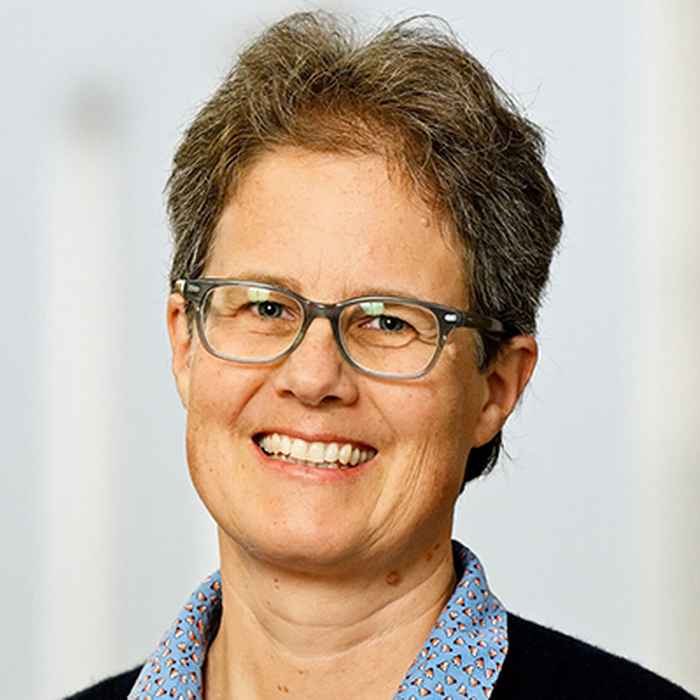
Anja Bieberle-Hütter studied Materials Science & Engineering at the University Erlangen-Nürnberg, Germany, and Alfred University, USA, and holds a PhD from ETH Zurich, Switzerland. After several years in industry and at Massachusetts Institute of Technology (MIT), USA, she worked as a senior scientist, Oberassistent, lecturer, and project manager at ETH. Since 2014, Dr. Bieberle is leading the group “Electrochemical Materials and Interfaces” at DIFFER (Dutch Institute for Fundamental Energy Research). She acted as the head of the Solar Fuels department from 2020 to 2023. Dr. Bieberle is a renowned international expert, was awarded many prices and research grants (e.g. Research infrastructure – national consortia (PLD4Energy); M2-ENW (BOOST)), and is represented in numerous (inter)national commissions and boards (e.g. EU joint program AMPEA, COST Action 18234, NWO theme Materials, Dutch Chemistry Council).
-
Prof. Guido Mul - University of Twente
Analysis of electrochemical reduction of CO2 by infrared and Raman spectroscopy in aqueous and non-aqueous media
Development of a selective electrocatalyst for electrochemical reduction of CO2 to value added products requires understanding of the effect of the electrode morphology and electrolyte composition on i) the nature of surface adsorbed intermediates and ii) the final composition of the product-gas. In this presentation I will provide several examples of how Infrared and Raman spectroscopy have recently been used to correlate applied potential and electrolyte composition to adsorbate composition on Copper surfaces. Highlights include i) observation of changes in the local pH near the electrode surface, ii) the presence of surface Cu-C and Cu-OH species, even at significantly negative potential. Finally analysis of Gold catalyzed reduction of CO2 in acetonitrile, mediated by an imidazolium additive, will be addressed, revealing mechanistic details in formation of Oxalate and CO.
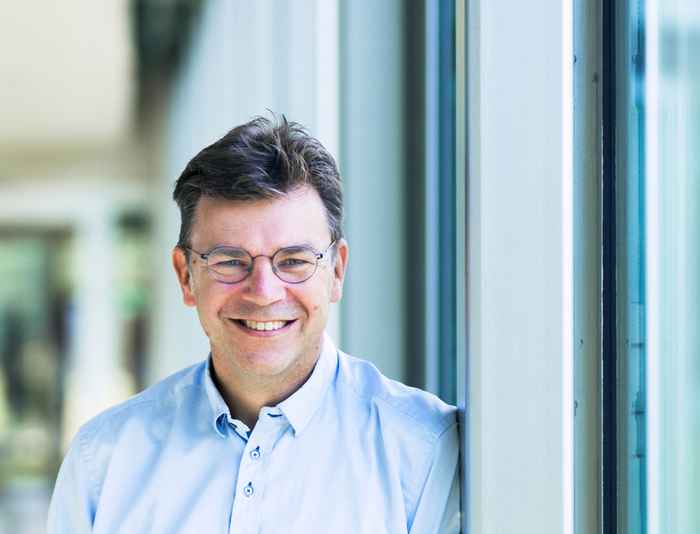
After obtaining a MSc in chemistry, with a specialization in heterogeneous catalysis from the University of Utrecht in 1992, Guido received his PhD in 1997 from the Delft University of Technology on a thesis on catalytic purification of Diesel exhaust gas. After a Post-Doc position at SRI-International (Stanford Research Institute) (1997-1999), he was awarded a fellowship of the KNAW (Royal Netherlands Academy of Arts and Sciences) to return to the Delft University of Technology as assistant professor, investigating the mechanism of heterogeneous catalytic processes using in situ Infrared and Raman spectroscopy. In 2005 he engaged in the discovery and analysis of (photo)catalytic processes.
In 2009 he was appointed full professor initiating the research group ‘Photocatalytic Synthesis’ at the University of Twente. Prof. Dr. Guido Mul is a leading scientist in performance evaluation of (photo)electrodes in various environmental and industrial applications. Evaluation of surface chemical phenomena rely heavily on his expertise in the use of Raman and Infrared spectroscopy. Dr. Mul published over 200 peer-reviewed papers. He chairs the discipline of chemical engineering at the UT, is managing large consortia active in the development of CO2 and H2O electrolyzers, and redox flow batteries. He is a member of the working party on Electrochemical Engineering of the EFCE (European Federation of Chemical Engineering), and an editorial board member of the international journals “ChemElectroChem“ and “ACS Environmental Science & Technology – Engineering”. Finally he enjoys teaching the courses Process Engineering, Industrial Chemistry and Processes, and Electrochemical Engineering at UT.
Contact details for Prof. Mul can be found at the University of Twente website.
-
Dr Adriaan Jeremiasse - Technology & Innovation, Magneto
Next generation catalytic electrodes for industry
Since the introduction of the Ti-based anode by Henri Beer, it has been used in many applications where a chlorine evolving or oxygen evolving anode is required. For example, in the chlor-alkali process, water treatment, cathodic protection, metal plating and electrowinning, and printed circuit board manufacturing. Most of these applications use an acidic or neutral electrolyte, and since durability is typically the critical factor, platinum group metals as catalyst are required. The regained interest in hydrogen production through alkaline water electrolysis, instigates the development of PGM-free electrodes for alkaline conditions. For water electrolysis, both high activity and durability are key, hence (accelerated) tests are developed and executed to validate both for new compositions. In this talk, we’ll address progress and challenges facing in developing next generation electrocatalysts for industrial electrolysis processes.
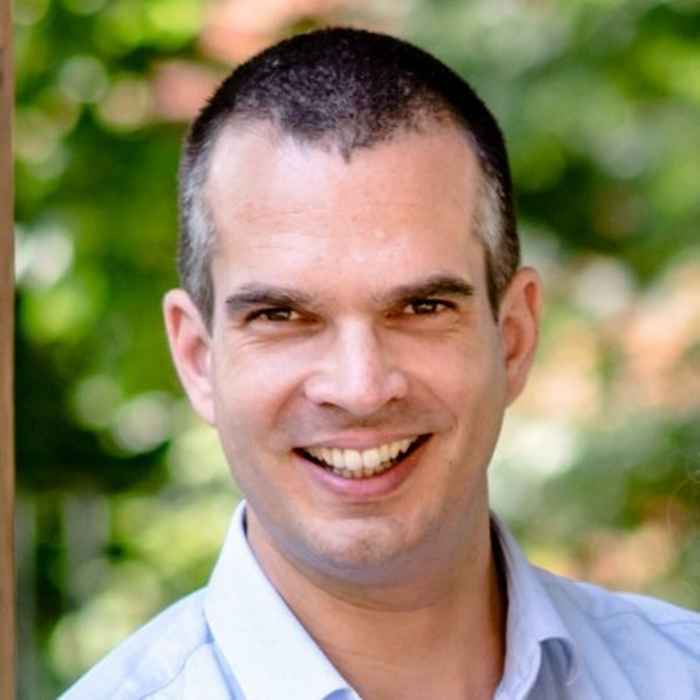
Adriaan Jeremiasse is Global R&D manager of Magneto special anodes. He is responsible for strategy and execution of the Global R&D program on electrodes for industrial electrochemistry. The Global R&D team consist of 17 scientists and technicians, divided over 2 global sites. Adriaan holds a MSc and PhD in Physical Chemistry and Environmental Technology from Wageningen University, The Netherlands. He is specifically interested in technical solutions for the energy transition and for providing clean water.
-
Dr Bart van den Bosch - Inholland University of Applied Sciences
The need for practical and applied research in electrochemistry
In this talk, Bart van den Bosch will highlight some skillsets that students learn from practicing applied research, and how this addresses the needs from the industry for their future, technically skilled personnel. By using examples from his work at Avantium, he will talk about how result-oriented research can accelerate technology development.
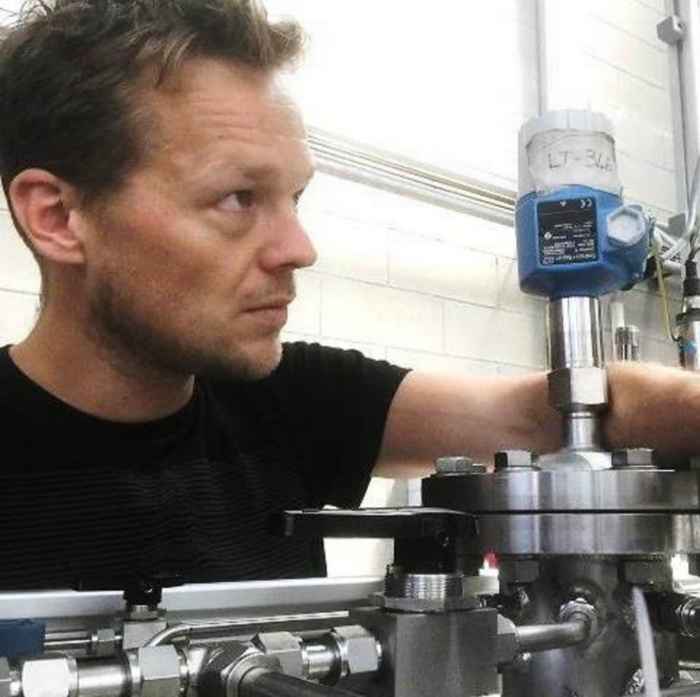
Bart has a PhD in electrochemistry from the UvA. After his PhD he focused on applied research for commercializing new technologies. He worked in two start-up companies and then moved to Avantium 8 years ago, where he is senior scientist in the electrochemistry group. In 2023 he started as part-time associate lector at InHolland University of Applied Science. In the research group 'Applied Material- and Electrochemistry' he works on translating early stage, fundamental research to well-defined applications.
-
Prof. Peter Bolhuis - Computational Chemistry, University of Amsterdam
Computational chemistry in the ANION consortium: the case of CO2 reduction
The ANION gravitation consortium brings together experts in chemistry, physics, and materials science, with the aim to advance fundamental understanding of the structure, dynamics, charge-transfer and electrocatalytic reactions at nanoscale electrochemical interfaces. Targeted electrochemical processes include lithium reduction, hydrogen and oxygen evolution reactions, and CO2 reduction—all key to energy storage solutions. In this talk I will give a short introduction of the AINION consortium and its aims. Then I will focus on the use of (DFT-based) molecular simulations to reach some of the goals. I will highlight the case of electrochemical reduction of carbon dioxide.
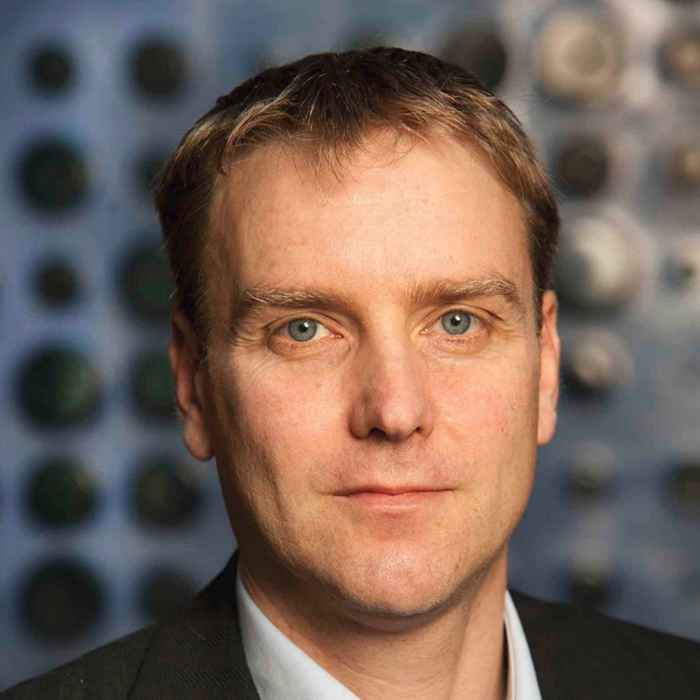
After receiving his master’s degree in chemistry at Utrecht University, Peter Bolhuis performed a PhD at the AMOLF institute. He graduated cum laude at Utrecht University in 1996. After two postdoctoral fellowships in Berkeley and Cambridge, he initiated his own research line on biomolecular simulations in the early 2000s, and became full professor in 2006. He is currently head of the computational chemistry theme at HIMS, and director of ACMM. From 2019 to 2021 he was also scientific director of HIMS.